AI Dashboard is available on the Web, Apple, Google, and Microsoft, PRO version
What is the Best Machine Learning Algorithms for Imbalanced Datasets?
In machine learning, imbalanced datasets are those where one class heavily outnumbers the others. This can be due to the nature of the problem or simply because more data is available for one class than the others. Either way, imbalanced datasets can pose a challenge for machine learning algorithms. In this blog post, we’ll take a look at which machine learning algorithms are best suited for imbalanced datasets and why they tend to perform better than others.
For example, in a binary classification problem, if there are 100 observations, and only 10 of them are positive (the rest are negatives), then we say that the dataset is imbalanced. The ratio of positive to negative cases is 1:10.

There are a few reasons why some machine learning algorithms tend to perform better on imbalanced datasets than others. First, certain algorithms are designed to handle imbalanced datasets. Second, some algorithms are more robust to outliers, which can be more common in imbalanced datasets. And third, some algorithms are better able to learn from a limited amount of data, which can be an issue when one class is heavily outnumbered by the others.
Some of the best machine learning algorithms for imbalanced datasets include:
– Support Vector Machines (SVMs),
– Decision Trees,
– Random Forests,
– Naive Bayes Classifiers,
– k-Nearest Neighbors (kNN),
Of these, SVMs tend to be the most popular choice as they are specifically designed to handle imbalanced datasets. SVMs work by finding a hyperplane that maximizes the margin between the two classes. This helps to reduce overfitting and improve generalization. Decision trees and random forests are also popular choices as they are less sensitive to outliers than other algorithms such as linear regression. Naive Bayes classifiers are another good choice as they are able to learn from a limited amount of data. kNN is also a good choice as it is not sensitive to outliers and is able to learn from a limited amount of data. However, it can be computationally intensive for large datasets.
There are two main types of machine learning algorithms: supervised and unsupervised. Supervised algorithms tend to perform better on imbalanced datasets than unsupervised algorithms. In this blog post, we will discuss why this is so and look at some examples.
Supervised Algorithms
Supervised algorithms are those where the target variable is known. In other words, we have training data where the correct answers are already given. The algorithm then learns from this data and is able to generalize to new data. Some examples of supervised algorithms are regression and classification.
Unsupervised Algorithms
Unsupervised algorithms are those where the target variable is not known. With unsupervised algorithms, we only have input data, without any corresponding output labels. The algorithm has to learn from the data itself without any guidance. Some examples of unsupervised algorithms are clustering and dimensionality reduction.
Why Supervised Algorithms Perform Better on Imbalanced Datasets
The reason why supervised algorithms perform better on imbalanced datasets is because they can learn from the training data which cases are more important. With unsupervised algorithms, all data points are treated equally, regardless of whether they are in the minority or majority class.
For example, in a binary classification problem with an imbalanced dataset, let’s say that we want to predict whether a customer will default on their loan payment or not. We have a training dataset of 1000 customers, out of which only 100 (10%) have defaulted on their loan in the past.
If we use a supervised algorithm like logistic regression, the algorithm will learn from the training data that defaulting on a loan is rare (since only 10% of cases in the training data are Positive). This means that it will be more likely to predict correctly that a new customer will not default on their loan (since this is the majority class in the training data).
However, if we use an unsupervised algorithm like k-means clustering, all data points will be treated equally since there is no target variable to guide the algorithm. This means that it might incorrectly cluster together customers who have defaulted on their loans with those who haven’t since there is no guidance provided by a target variable.
Conclusion:
In conclusion, supervised machine learning algorithms tend to perform better on imbalanced datasets than unsupervised machine learning algorithms because they can learn from the training data which cases are more important.
Some machine learning algorithms tend to perform better on highly imbalanced datasets because they are designed to deal with imbalance or because they can learn from both classes simultaneously. If you are working with a highly imbalanced dataset, then you should consider using one of these algorithms.
Thanks for reading!
How are machine learning techniques being used to address unstructured data challenges?
Machine learning techniques are being used to address unstructured data challenges in a number of ways:
- Natural language processing (NLP): NLP algorithms can be used to extract meaningful information from unstructured text data, such as emails, documents, and social media posts. NLP algorithms can be trained to classify text data, identify key terms and concepts, and extract structured data from unstructured text.
- Image recognition: Machine learning algorithms can be used to analyze and classify images, enabling the automatic identification and classification of objects, people, and other elements in images. This can be useful for tasks such as image tagging and search, as well as for applications such as security and surveillance.
- Audio and speech recognition: Machine learning algorithms can be used to analyze and classify audio data, enabling the automatic transcription and translation of spoken language. This can be useful for tasks such as speech-to-text transcription, as well as for applications such as call center automation and language translation.
- Video analysis: Machine learning algorithms can be used to analyze and classify video data, enabling the automatic detection and classification of objects, people, and other elements in video. This can be useful for tasks such as video tagging and search, as well as for applications such as security and surveillance.
Overall, machine learning techniques are being used in a wide range of applications to extract meaningful information from unstructured data, and to enable the automatic classification and analysis of data in a variety of formats.
How is AI and machine learning impacting application development today?
Artificial intelligence (AI) and machine learning are having a significant impact on application development today in a number of ways:
- Enabling new capabilities: AI and machine learning algorithms can be used to enable applications to perform tasks that would be difficult or impossible for humans to do. For example, AI-powered applications can be used to analyze and classify large amounts of data, or to automate complex decision-making processes.
- Improving performance: AI and machine learning algorithms can be used to optimize the performance of applications, making them faster, more efficient, and more accurate. For example, machine learning algorithms can be used to improve the accuracy of predictive models, or to optimize the performance of search algorithms.
- Streamlining development: AI and machine learning algorithms can be used to automate various aspects of application development, such as testing, debugging, and deployment. This can help to streamline the development process and reduce the time and resources needed to build and maintain applications.
- Enhancing user experiences: AI and machine learning algorithms can be used to enhance the user experience of applications, by providing personalized recommendations, recommendations, or by enabling applications to anticipate and respond to the needs and preferences of users.
Overall, AI and machine learning are having a significant impact on application development today, and they are likely to continue to shape the way applications are built and used in the future.
How will advancements in artificial intelligence and machine learning shape the future of work and society?
Advancements in artificial intelligence (AI) and machine learning are likely to shape the future of work and society in a number of ways. Some potential impacts include:
Get 20% off Google Google Workspace (Google Meet) Standard Plan with the following codes: 96DRHDRA9J7GTN6
 Get 20% off Google Workspace (Google Meet) Business Plan (AMERICAS): M9HNXHX3WC9H7YE (Email us for more codes)
Get 20% off Google Workspace (Google Meet) Business Plan (AMERICAS): M9HNXHX3WC9H7YE (Email us for more codes)
Active Anti-Aging Eye Gel, Reduces Dark Circles, Puffy Eyes, Crow's Feet and Fine Lines & Wrinkles, Packed with Hyaluronic Acid & Age Defying Botanicals

- Automation: AI and machine learning algorithms can be used to automate tasks that are currently performed by humans, such as data entry, customer service, and manufacturing. This could lead to changes in the types of jobs that are available and the skills that are in demand, as well as to increased productivity and efficiency.
- Job displacement: While automation may create new job opportunities, it could also lead to job displacement, particularly for workers in industries that are more susceptible to automation. This could lead to social and economic challenges, including unemployment and income inequality.
- Increased efficiency: AI and machine learning algorithms can be used to optimize and streamline business processes, leading to increased efficiency and productivity. This could lead to economic growth and innovation, and could also help to reduce costs for businesses and consumers.
- Enhanced decision-making: AI and machine learning algorithms can be used to analyze large amounts of data and make more informed and accurate decisions. This could lead to improved outcomes in fields such as healthcare, finance, and education, and could also help to reduce bias and improve fairness.
Overall, the impact of AI and machine learning on the future of work and society is likely to be significant and complex, with both potential benefits and challenges. It will be important to consider and address these impacts as these technologies continue to advance and become more widely adopted.
- [D]What Nomenclature do you follow for naming ML Models?by /u/BravoZero6 (Machine Learning) on April 26, 2024 at 4:42 pm
Hi All, I am brainstorming some kind of a nomenclature for our team so that theres a standard way of naming ML models like their pickle files . Any inputs will be appreciated. thanks submitted by /u/BravoZero6 [link] [comments]
- [D] Advice Needed: Enhancing NER for ADE Detection in Clinical Texts (Thesis Work)by /u/Popsuga (Machine Learning) on April 26, 2024 at 4:29 pm
Hi r/MachineLearning community, I'm currently working on the second part of my thesis focused on Named Entity Recognition (NER) for detecting Adverse Drug Events (ADE) in clinical texts. In my first thesis project, I tried to replicate a paper but had to pivot to the n2c2 dataset, which led to challenges in model performance. I've fine-tuned a DeBERTa model with standard practices, but I'm struggling with achieving high accuracy, particularly with precision and recall. This is my first deep dive into a thesis and the world of NLP, and any guidance would be immensely appreciated. Also, any common pitfalls for thesis work or useful resources on this topic would be extremely helpful. I'm eager to learn from the community and improve my research. Thank you so much for your time! submitted by /u/Popsuga [link] [comments]
- [R]Large language models may not be able to sample behavioral probability distributionsby /u/GYX-001 (Machine Learning) on April 26, 2024 at 4:11 pm
Through our experiments, we found that LLM agents have a certain ability to understand probability distributions, the LLM agent's sampling ability for probability distributions is lacking and it is difficult to give a behavior sequence that conforms to a certain probability distribution through LLMs alone. We are looking forward to your thoughts, critiques, and discussions on this topic. Full Paper & Citation: You can access the full paper https://arxiv.org/abs/2404.09043. Please cite our work if it contributes to your research. https://preview.redd.it/ai7uks7nluwc1.png?width=935&format=png&auto=webp&s=891dd57ef50d1ee99b1a8b2372b9a460397754d6 submitted by /u/GYX-001 [link] [comments]
- [D] GAN/Adversary Autoencoder/Cycle GANby /u/investmentwholesome (Machine Learning) on April 26, 2024 at 4:09 pm
Main aim: Style transfer between two discrete timeseries signals. Here are the details: Dataset: Discrete time series. 1700 rows, with 97 percent of it with zeroes. Cannot remove these zeroes as it means something. Values ranging from 0-32 for one of the features in Domain A needs to translated to another feature with same range in domain B. Another feature from 0-5000 from domain A, translated to a different domain B with same range. I can recreate the same dataset multiple times with small variations, so we can have larger datasets. I would create sequences of size 20 or 30 and batch: 32 or 64 initially. Generator Network: A simple encoder with linear layer first hidden size:16 , relu, 2nd linear layer :8 and relu again . A symmetric Decoder . Discriminator: 2 linear layers with hidden size 8 and leaky Relu between them. And sigmoid as final layer. Loss function : BCEloss . Also experimented BCE + MSE loss for generator. Training: I'm using pytorch. Only trained with one feature/signal and tried to generate this feature from noise. Didn't move to cycle consistency yet. With the small dataset training, the discriminator becomes too strong, I even tried to set reduce the learning rate for discriminator as 0.0001 and generator as 0.01 , it didn't work. Tried to add/complicate the layer of generator, still didn't work. Tried to train discriminator every 10th epoch, while the generator trained more. Didn't work. Also tried to normalize the data. I want to explore Adversarial autoencoder /cycle Gan , but the generator is unable to learn anything with vanilla GAN as well. Can someone help or give me some ideas on what I can do ? Thanks submitted by /u/investmentwholesome [link] [comments]
- GPU out of memory error message on Colab with Llama 3 [D]by /u/ReputationMindless32 (Machine Learning) on April 26, 2024 at 3:43 pm
Hi guys, I just tried to run Llama 3 on my Colab(free version) and seems that I ran out of the memory: OutOfMemoryError: CUDA out of memory. Tried to allocate 32.00 MiB. GPU 0 has a total capacity of 14.75 GiB of which 9.06 MiB is free. Process 8863 has 14.74 GiB memory in use. Of the allocated memory 14.60 GiB is allocated by PyTorch, and 22.06 MiB is reserved by PyTorch but unallocated. If reserved but unallocated memory is large try setting PYTORCH_CUDA_ALLOC_CONF=expandable_segments:True to avoid fragmentation. See documentation for Memory Management (https://pytorch.org/docs/stable/notes/cuda.html#environment-variables) Anyone have the same experience? Has anyone managed to run Llama 3 on free version of Colab (or similar platform)? Thanks! submitted by /u/ReputationMindless32 [link] [comments]
- [D] Overwhelming LLM release rate: Seeking suggestions for building a test set to evaluate LLMsby /u/Distinct-Target7503 (Machine Learning) on April 26, 2024 at 2:43 pm
Hi everyone, I'm trying to build my own test set in order to make an initial fast evaluation of the huge number of models that pop up on huggingface.co every week, and I'm searching for a starting point or suggestions. If someone would share some questions that they use to test LLM abilities, even as high-level concepts, or simply give me some tips or suggestions, I would really appreciate that! Thanks in advance to everyone for any kind of reply." submitted by /u/Distinct-Target7503 [link] [comments]
- [R] Reinforcement Learning via Regressing Relative Rewardsby /u/athens117 (Machine Learning) on April 26, 2024 at 1:10 pm
https://arxiv.org/abs/2404.16767 New deep RL algorithm that works with both language models and diffusion models. submitted by /u/athens117 [link] [comments]
- [D] Clean caption datasetby /u/themathstudent (Machine Learning) on April 26, 2024 at 11:09 am
I am attempting to train CLIP from scratch. However, there is a lack of available datasets. The one dataset that seemed quite diverse and clean seems to be taken down (laion-400m). Looking at HF datasets, these are the two datasets that are promising, but wondering if there has been anything better/ cleaner. - conceptual captions: uses alt-text. - red_caps: reddit threads, but these are mostly the first comment on the image than an actual caption. TIA submitted by /u/themathstudent [link] [comments]
- [D] LLMs: Why does in-context learning work? What exactly is happening from a technical perspective?by /u/synthphreak (Machine Learning) on April 26, 2024 at 11:01 am
Everywhere I look for the answer to this question, the responses do little more than anthropomorphize the model. They invariably make claims like: Without examples, the model must infer context and rely on its knowledge to deduce what is expected. This could lead to misunderstandings. One-shot prompting reduces this cognitive load by offering a specific example, helping to anchor the model's interpretation and focus on a narrower task with clearer expectations. The example serves as a reference or hint for the model, helping it understand the type of response you are seeking and triggering memories of similar instances during training. Providing an example allows the model to identify a pattern or structure to replicate. It establishes a cue for the model to align with, reducing the guesswork inherent in zero-shot scenarios. These are real excerpts, btw. But these models don’t “understand” anything. They don’t “deduce”, or “interpret”, or “focus”, or “remember training”, or “make guesses”, or have literal “cognitive load”. They are just statistical token generators. Therefore pop-sci explanations like these are kind of meaningless when seeking a concrete understanding of the exact mechanism by which in-context learning improves accuracy. Can someone offer an explanation that explains things in terms of the actual model architecture/mechanisms and how the provision of additional context leads to better output? I can “talk the talk”, so spare no technical detail please. I could make an educated guess - Including examples in the input which use tokens that approximate the kind of output you want leads the attention mechanism and final dense layer to weight more highly tokens which are similar in some way to these examples, increasing the odds that these desired tokens will be sampled at each generation step; like fundamentally I’d guess a similarity/distance thing, where explicitly exemplifying the output I want increases the odds that the output get will be similar to it - but I’d prefer to hear it from someone else with deep knowledge of these models and mechanisms. submitted by /u/synthphreak [link] [comments]
- [D] Critical batch size and LLMsby /u/kiockete (Machine Learning) on April 26, 2024 at 9:21 am
In a video about "A little guide to building Large Language Models in 2024" at 41:38 the author starts to talk about the limits of how big the batch size can be. Well, if you start to have a very large batch size, the model for each optimization step makes less efficient use of each token, because the batch size is so big that each token is kind of washed out in the optimization step. And roughly, it's a little bit hard to measure this limit, which we call the critical batch size. I thought that the bigger batch size is always better for training LLMs, because: It better approximates the true gradient. We go through the dataset faster. To my knowledge the limits are only infrastructure, hardware, communication overhead etc. I found a paper that introduces the "critical batch size" concept - An Empirical Model of Large-Batch Training. It mostly talks about the speed/efficiency tradeoff for data parallelism of large batch sizes. Also another highly cited paper Scaling Laws for Neural Language Models: Training at the critical batch size provides a roughly optimal compromise between time and compute efficiency So I don't really understand what author of the video meant by saying: each token is kind of washed out in the optimization step Are there any other issues with large batch sizes other than infrastructure, hardware or implementation limits? submitted by /u/kiockete [link] [comments]
- [Discussion] Time series regression problem?by /u/seboz12345 (Machine Learning) on April 26, 2024 at 9:21 am
Hi guys,I have a problem for which I am not sure what would be the best approach (and I cannot really find any relevant literature).I have a small dataset (~100 measurements like the one attached) of a sensor value, for which I want to predict a certain relevant event. Here t_0 is the relevant moment in time which I want to predict. The problem is, that I need to trigger something when the event is reached. If I need too long to trigger after it was reached, it will not be a positive outcome.My initial idea was to basically chunk the time series before the event, and try to predict the remaining time from that segment until the event is reached. When it is below a threshold, I can trigger my action. I wanted to have a look at e.g. XGBoost and feed it small chunks of the timeseries and run this process continuously. I am not really sure if that is the correct approach there.Is that a known problem? What would be a good name for this problem to search for literature? Do you have suggestions how to solve it? Thanks. https://preview.redd.it/l59gsmswkswc1.png?width=1303&format=png&auto=webp&s=f9e83d7b87ce5227378de6a0805a916fd4f93314 submitted by /u/seboz12345 [link] [comments]
- [D] What is the State of Art for text to speech synthesis?by /u/Zelun (Machine Learning) on April 26, 2024 at 4:24 am
I'm starting to do some research for my graduation and I'm looking for some papers on text to speech synthesis. I'm doing some reproductions on a paper I found to be interesting called Natural TTS Synthesis by Conditioning WaveNet on Mel Spectrogram Prediction. Basically it's a model that receives text, turns it into a spectogram and the spectogram is used to build the audio file. Since I'm still at the start of reproduction, are there papers that you guys would recommend looking into? Did you work with speech synthesis (TTS)? What are good refferences I should look into? I saw this post over here https://www.reddit.com/r/MachineLearning/comments/nxkuvn/d_what_is_actually_the_state_of_the_art_in_text/ But it already has 3 years. Maybe there is something newer than FastSpeech2? submitted by /u/Zelun [link] [comments]
- [D] Meta-learning vs Federated Learning?by /u/Tight_Confusion_1695 (Machine Learning) on April 26, 2024 at 3:53 am
[D] Hey everyone, do you have any suggestions on what's the better option and the most effective way to dive into a hot topic these days? I stumbled upon a repository for Federated Learning at: https://github.com/muditbhargava66/dropgrad https://github.com/adap/flower But can't seem to find anything similar for Meta Learning. Any advice on how to pick my PhD topic would be greatly appreciated! submitted by /u/Tight_Confusion_1695 [link] [comments]
- [P] Multihead Mixture of Experts - Implementation of dense subtoken routing suggested in https://arxiv.org/pdf/2404.15045by /u/Prudent_Student2839 (Machine Learning) on April 25, 2024 at 10:00 pm
My friend implemented the method of Multihead Mixture of Experts in this arxiv paper https://arxiv.org/pdf/2404.15045 and he wanted me to share it with you! https://github.com/lhallee/Multi_Head_Mixture_of_Experts__MH-MOE Try it out. Let me know what you think and I will pass it on to him. submitted by /u/Prudent_Student2839 [link] [comments]
- [D] HyenaDNA and Mamba are not good at sequential labelling ?by /u/blooming17 (Machine Learning) on April 25, 2024 at 8:02 pm
Hello guys, I've been working on a sequential labelling using DNA sequences as inputs. Lately there have been 2 foundation models released HyenaDNA (Based on Hyena operator) and Caduceus (based on mamba), I used both pretrained and from scratch models and performances are terrible even with pretrained ones. Does anyone have experience with this type of models, and what are the potential causes for performance drop ? I am literally getting zero performance for the minority class ? Does mamba deal poorly with class imbalance ? submitted by /u/blooming17 [link] [comments]
- [P] Drug toxicity prediction model with graph-based neural networksby /u/Soroush_ra (Machine Learning) on April 25, 2024 at 7:10 pm
This is a small drug toxicity prediction GNN model I wrote/trained repo: https://github.com/Null-byte-00/toxicity-prediction-gnn submitted by /u/Soroush_ra [link] [comments]
- [D] What are your horror stories from being tasked impossible ML problemsby /u/LanchestersLaw (Machine Learning) on April 25, 2024 at 6:45 pm
ML is very good at solving a niche set of problems, but most of the technical nuances are lost on tech bros and managers. What are some problems you have been told to solve which would be impossible (no data, useless data, unrealistic expectations) or a misapplication of ML (can you have this LLM do all of out accounting). submitted by /u/LanchestersLaw [link] [comments]
- Datasets for Causal ML [D]by /u/Direct-Touch469 (Machine Learning) on April 25, 2024 at 6:24 pm
Does anyone know what datasets are out there for causal inference? I’d like to explore methods in the doubly robust ML literature, and I’d like to compensate my learning by working on some datasets and learn the econML software. Does anyone know of any datasets, specifically in the context of marketing/pricing/advertising that would be good sources to apply causal inference techniques? I’m open to other datasets as well. submitted by /u/Direct-Touch469 [link] [comments]
- [P] Dreamboothing MusicGenby /u/Sufficient-Tennis189 (Machine Learning) on April 25, 2024 at 5:43 pm
Dreambooth the MusicGen model suite on small consumer GPUs, in a matter of minutes, using this repository: https://github.com/ylacombe/musicgen-dreamboothing The aim of this project is to provide tools to easily fine-tune and dreambooth the MusicGen model suite, with little data and to leverage a series of optimizations and tricks to reduce resource consumption, thanks to LoRA adaptors. For example, the model can be fine-tuned on a particular music genre or artist to give a checkpoint that generates in that given style. The aim is also to easily share and build on these trained checkpoints, Specifically, this involves: using as few data and resources as possible. We're talking fine-tuning with as little as 15mn on an A100 and as little as 10GB to 16GB of GPU utilization. easily share and build models thanks to the Hugging Face Hub. optionally, generate automatic music descriptions optionally, training MusicGen in a Dreambooth-like fashion, where one key-word triggers generation in a particular style Wandb example of what the training run looks like here. submitted by /u/Sufficient-Tennis189 [link] [comments]
- [R] Lossless Acceleration of Large Language Model via Adaptive N-gram Parallel Decodingby /u/SeawaterFlows (Machine Learning) on April 25, 2024 at 4:08 pm
Paper: https://arxiv.org/abs/2404.08698 Abstract: While Large Language Models (LLMs) have shown remarkable abilities, they are hindered by significant resource consumption and considerable latency due to autoregressive processing. In this study, we introduce Adaptive N-gram Parallel Decoding (ANPD), an innovative and lossless approach that accelerates inference by allowing the simultaneous generation of multiple tokens. ANPD incorporates a two-stage approach: it begins with a rapid drafting phase that employs an N-gram module, which adapts based on the current interactive context, followed by a verification phase, during which the original LLM assesses and confirms the proposed tokens. Consequently, ANPD preserves the integrity of the LLM's original output while enhancing processing speed. We further leverage a multi-level architecture for the N-gram module to enhance the precision of the initial draft, consequently reducing inference latency. ANPD eliminates the need for retraining or extra GPU memory, making it an efficient and plug-and-play enhancement. In our experiments, models such as LLaMA and its fine-tuned variants have shown speed improvements up to 3.67x, validating the effectiveness of our proposed ANPD. submitted by /u/SeawaterFlows [link] [comments]
Active Hydrating Toner, Anti-Aging Replenishing Advanced Face Moisturizer, with Vitamins A, C, E & Natural Botanicals to Promote Skin Balance & Collagen Production, 6.7 Fl Oz


Age Defying 0.3% Retinol Serum, Anti-Aging Dark Spot Remover for Face, Fine Lines & Wrinkle Pore Minimizer, with Vitamin E & Natural Botanicals


Firming Moisturizer, Advanced Hydrating Facial Replenishing Cream, with Hyaluronic Acid, Resveratrol & Natural Botanicals to Restore Skin's Strength, Radiance, and Resilience, 1.75 Oz

Skin Stem Cell Serum


Smartphone 101 - Pick a smartphone for me - android or iOS - Apple iPhone or Samsung Galaxy or Huawei or Xaomi or Google Pixel
Can AI Really Predict Lottery Results? We Asked an Expert.

Djamgatech

Read Photos and PDFs Aloud for me iOS
Read Photos and PDFs Aloud for me android
Read Photos and PDFs Aloud For me Windows 10/11
Read Photos and PDFs Aloud For Amazon
Get 20% off Google Workspace (Google Meet) Business Plan (AMERICAS): M9HNXHX3WC9H7YE (Email us for more)
Get 20% off Google Google Workspace (Google Meet) Standard Plan with the following codes: 96DRHDRA9J7GTN6(Email us for more)
FREE 10000+ Quiz Trivia and and Brain Teasers for All Topics including Cloud Computing, General Knowledge, History, Television, Music, Art, Science, Movies, Films, US History, Soccer Football, World Cup, Data Science, Machine Learning, Geography, etc....

List of Freely available programming books - What is the single most influential book every Programmers should read
- Bjarne Stroustrup - The C++ Programming Language
- Brian W. Kernighan, Rob Pike - The Practice of Programming
- Donald Knuth - The Art of Computer Programming
- Ellen Ullman - Close to the Machine
- Ellis Horowitz - Fundamentals of Computer Algorithms
- Eric Raymond - The Art of Unix Programming
- Gerald M. Weinberg - The Psychology of Computer Programming
- James Gosling - The Java Programming Language
- Joel Spolsky - The Best Software Writing I
- Keith Curtis - After the Software Wars
- Richard M. Stallman - Free Software, Free Society
- Richard P. Gabriel - Patterns of Software
- Richard P. Gabriel - Innovation Happens Elsewhere
- Code Complete (2nd edition) by Steve McConnell
- The Pragmatic Programmer
- Structure and Interpretation of Computer Programs
- The C Programming Language by Kernighan and Ritchie
- Introduction to Algorithms by Cormen, Leiserson, Rivest & Stein
- Design Patterns by the Gang of Four
- Refactoring: Improving the Design of Existing Code
- The Mythical Man Month
- The Art of Computer Programming by Donald Knuth
- Compilers: Principles, Techniques and Tools by Alfred V. Aho, Ravi Sethi and Jeffrey D. Ullman
- Gödel, Escher, Bach by Douglas Hofstadter
- Clean Code: A Handbook of Agile Software Craftsmanship by Robert C. Martin
- Effective C++
- More Effective C++
- CODE by Charles Petzold
- Programming Pearls by Jon Bentley
- Working Effectively with Legacy Code by Michael C. Feathers
- Peopleware by Demarco and Lister
- Coders at Work by Peter Seibel
- Surely You're Joking, Mr. Feynman!
- Effective Java 2nd edition
- Patterns of Enterprise Application Architecture by Martin Fowler
- The Little Schemer
- The Seasoned Schemer
- Why's (Poignant) Guide to Ruby
- The Inmates Are Running The Asylum: Why High Tech Products Drive Us Crazy and How to Restore the Sanity
- The Art of Unix Programming
- Test-Driven Development: By Example by Kent Beck
- Practices of an Agile Developer
- Don't Make Me Think
- Agile Software Development, Principles, Patterns, and Practices by Robert C. Martin
- Domain Driven Designs by Eric Evans
- The Design of Everyday Things by Donald Norman
- Modern C++ Design by Andrei Alexandrescu
- Best Software Writing I by Joel Spolsky
- The Practice of Programming by Kernighan and Pike
- Pragmatic Thinking and Learning: Refactor Your Wetware by Andy Hunt
- Software Estimation: Demystifying the Black Art by Steve McConnel
- The Passionate Programmer (My Job Went To India) by Chad Fowler
- Hackers: Heroes of the Computer Revolution
- Algorithms + Data Structures = Programs
- Writing Solid Code
- JavaScript - The Good Parts
- Getting Real by 37 Signals
- Foundations of Programming by Karl Seguin
- Computer Graphics: Principles and Practice in C (2nd Edition)
- Thinking in Java by Bruce Eckel
- The Elements of Computing Systems
- Refactoring to Patterns by Joshua Kerievsky
- Modern Operating Systems by Andrew S. Tanenbaum
- The Annotated Turing
- Things That Make Us Smart by Donald Norman
- The Timeless Way of Building by Christopher Alexander
- The Deadline: A Novel About Project Management by Tom DeMarco
- The C++ Programming Language (3rd edition) by Stroustrup
- Patterns of Enterprise Application Architecture
- Computer Systems - A Programmer's Perspective
- Agile Principles, Patterns, and Practices in C# by Robert C. Martin
- Growing Object-Oriented Software, Guided by Tests
- Framework Design Guidelines by Brad Abrams
- Object Thinking by Dr. David West
- Advanced Programming in the UNIX Environment by W. Richard Stevens
- Hackers and Painters: Big Ideas from the Computer Age
- The Soul of a New Machine by Tracy Kidder
- CLR via C# by Jeffrey Richter
- The Timeless Way of Building by Christopher Alexander
- Design Patterns in C# by Steve Metsker
- Alice in Wonderland by Lewis Carol
- Zen and the Art of Motorcycle Maintenance by Robert M. Pirsig
- About Face - The Essentials of Interaction Design
- Here Comes Everybody: The Power of Organizing Without Organizations by Clay Shirky
- The Tao of Programming
- Computational Beauty of Nature
- Writing Solid Code by Steve Maguire
- Philip and Alex's Guide to Web Publishing
- Object-Oriented Analysis and Design with Applications by Grady Booch
- Effective Java by Joshua Bloch
- Computability by N. J. Cutland
- Masterminds of Programming
- The Tao Te Ching
- The Productive Programmer
- The Art of Deception by Kevin Mitnick
- The Career Programmer: Guerilla Tactics for an Imperfect World by Christopher Duncan
- Paradigms of Artificial Intelligence Programming: Case studies in Common Lisp
- Masters of Doom
- Pragmatic Unit Testing in C# with NUnit by Andy Hunt and Dave Thomas with Matt Hargett
- How To Solve It by George Polya
- The Alchemist by Paulo Coelho
- Smalltalk-80: The Language and its Implementation
- Writing Secure Code (2nd Edition) by Michael Howard
- Introduction to Functional Programming by Philip Wadler and Richard Bird
- No Bugs! by David Thielen
- Rework by Jason Freid and DHH
- JUnit in Action
#BlackOwned #BlackEntrepreneurs #BlackBuniness #AWSCertified #AWSCloudPractitioner #AWSCertification #AWSCLFC02 #CloudComputing #AWSStudyGuide #AWSTraining #AWSCareer #AWSExamPrep #AWSCommunity #AWSEducation #AWSBasics #AWSCertified #AWSMachineLearning #AWSCertification #AWSSpecialty #MachineLearning #AWSStudyGuide #CloudComputing #DataScience #AWSCertified #AWSSolutionsArchitect #AWSArchitectAssociate #AWSCertification #AWSStudyGuide #CloudComputing #AWSArchitecture #AWSTraining #AWSCareer #AWSExamPrep #AWSCommunity #AWSEducation #AzureFundamentals #AZ900 #MicrosoftAzure #ITCertification #CertificationPrep #StudyMaterials #TechLearning #MicrosoftCertified #AzureCertification #TechBooks
Top 1000 Canada Quiz and trivia: CANADA CITIZENSHIP TEST- HISTORY - GEOGRAPHY - GOVERNMENT- CULTURE - PEOPLE - LANGUAGES - TRAVEL - WILDLIFE - HOCKEY - TOURISM - SCENERIES - ARTS - DATA VISUALIZATION

Top 1000 Africa Quiz and trivia: HISTORY - GEOGRAPHY - WILDLIFE - CULTURE - PEOPLE - LANGUAGES - TRAVEL - TOURISM - SCENERIES - ARTS - DATA VISUALIZATION

Exploring the Pros and Cons of Visiting All Provinces and Territories in Canada.

Exploring the Advantages and Disadvantages of Visiting All 50 States in the USA

Health Health, a science-based community to discuss health news and the coronavirus (COVID-19) pandemic
- Irregular bone marrow cells may increase heart disease riskby /u/Passervore on April 26, 2024 at 2:55 pm
submitted by /u/Passervore [link] [comments]
- ‘Real hope’ for cancer cure as personal mRNA vaccine for melanoma trialledby /u/Well_Socialized on April 26, 2024 at 2:53 pm
submitted by /u/Well_Socialized [link] [comments]
- 20% of grocery store milk has traces of bird flu, suggesting wider outbreak | The milk is still considered safe, but disease experts are alarmed by the prevalence.by /u/chrisdh79 on April 26, 2024 at 2:48 pm
submitted by /u/chrisdh79 [link] [comments]
- "Teachers and family dismissed my cry for help—it was almost too late"by /u/newsweek on April 26, 2024 at 12:41 pm
submitted by /u/newsweek [link] [comments]
- A new kind of gene-edited pig kidney was just transplanted into a personby /u/Sariel007 on April 26, 2024 at 12:32 pm
submitted by /u/Sariel007 [link] [comments]
Today I Learned (TIL) You learn something new every day; what did you learn today? Submit interesting and specific facts about something that you just found out here.
- TIL A group of horses were trained to communicate whether they wanted a jacket. All horses in the group successfully communicated that they did want a jacket when it was cold and did not want a jacket when it was hot.by /u/PunnyBanana on April 26, 2024 at 2:20 pm
submitted by /u/PunnyBanana [link] [comments]
- TIL when the artists arrived to record "We Are the World," Stevie Wonder told them that if the song wasn't finished in one take, he and Ray Charles would drive them home.by /u/RequirementSouth4482 on April 26, 2024 at 1:53 pm
submitted by /u/RequirementSouth4482 [link] [comments]
- TIL E.T was a 12-year-old disabled boy in a suitby /u/DiaBoloix on April 26, 2024 at 12:43 pm
submitted by /u/DiaBoloix [link] [comments]
- TIL that a politician gave a food review of kebab while speaking in parliament. Australian Senator Sam Dastyari gave a "10 out of 10" rating to the kebab snack pack sold at King Kebab House, and advised others to also enjoy "a great Australian tradition of meat in a box".by /u/TMWNN on April 26, 2024 at 11:47 am
submitted by /u/TMWNN [link] [comments]
- TIL the infamous "Jump the Shark" episode of Happy Days (Season 5, Episode 3) was created as a way to showcase Henry Winkler's real-life water skiing skills. The episode drew over 30 million viewers.by /u/ColeBelthazorTurner on April 26, 2024 at 11:36 am
submitted by /u/ColeBelthazorTurner [link] [comments]
Reddit Science This community is a place to share and discuss new scientific research. Read about the latest advances in astronomy, biology, medicine, physics, social science, and more. Find and submit new publications and popular science coverage of current research.
- Researchers have developed a nanomaterial that could be used to treat neurodegenerative diseases, such as Alzheimer's or Parkinson's. The new "protein-like polymer" has been shown to alter the interaction between two key brain proteins in cell cultures, releasing an important antioxidant on demand.by /u/alexbeadlesci on April 26, 2024 at 3:34 pm
submitted by /u/alexbeadlesci [link] [comments]
- EV drivers need to transition from the “monitor fuel gauge model” (driver refuels when fuel is running out) which represents how most people refuel a petrol or diesel car, to the “event-triggered model” (driver plugs in as soon as arriving home or work) which is optimum for EV use, finds new study.by /u/mvea on April 26, 2024 at 1:49 pm
submitted by /u/mvea [link] [comments]
- Recent research challenges the common belief that childhood trauma affects the experience of ayahuasca, a plant-based psychedelic. Surprisingly, the study finds no connection between prior childhood trauma and the intensity of challenges faced when under the influence of ayahuasca.by /u/mvea on April 26, 2024 at 1:29 pm
submitted by /u/mvea [link] [comments]
- ‘Uncharted territory’: Dual fusion breakthrough in generating denser and safer plasmaby /u/Cleancoolenergy on April 26, 2024 at 1:12 pm
submitted by /u/Cleancoolenergy [link] [comments]
- Researchers have found a fast, and inexpensive way to create geometric patterns in carbon nanotube films. The resulting films turned out to have superior properties for manufacturing components for 6G communication devices and flexible and transparent electronics — such as wearable health trackers.by /u/Skoltech_ on April 26, 2024 at 11:56 am
submitted by /u/Skoltech_ [link] [comments]
Reddit Sports Sports News and Highlights from the NFL, NBA, NHL, MLB, MLS, and leagues around the world.
- Falcons GM explains shocking selection of Michael Penix Jr. that left Kirk Cousins 'disappointed'by /u/Oldtimer_2 on April 26, 2024 at 1:45 pm
submitted by /u/Oldtimer_2 [link] [comments]
- Joel Embiid scores 50 points to lead 76ers past Knicks 125-114 to cut deficit to 2-1by /u/Oldtimer_2 on April 26, 2024 at 1:13 pm
submitted by /u/Oldtimer_2 [link] [comments]
- 49ers excited to have Aiyuk, Deebo, Pearsall togetherby /u/Oldtimer_2 on April 26, 2024 at 1:12 pm
submitted by /u/Oldtimer_2 [link] [comments]
- Nuggets breeze past Lakers, take 3-0 series leadby /u/Oldtimer_2 on April 26, 2024 at 1:10 pm
submitted by /u/Oldtimer_2 [link] [comments]
- Brazil legend Marta to retire from international footballby /u/PrincessBananas85 on April 26, 2024 at 1:08 pm
submitted by /u/PrincessBananas85 [link] [comments]
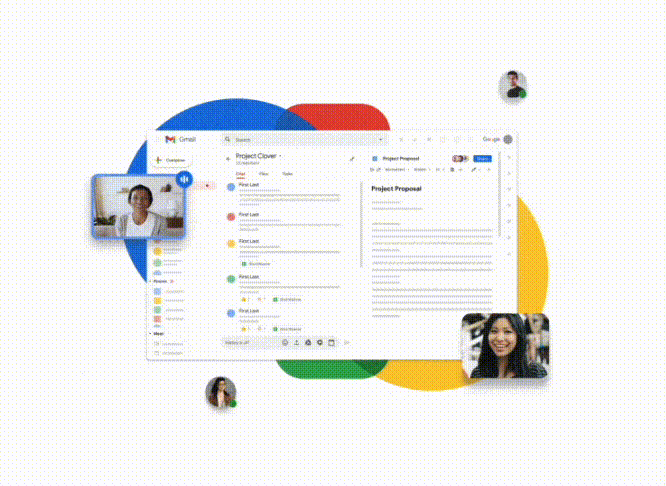








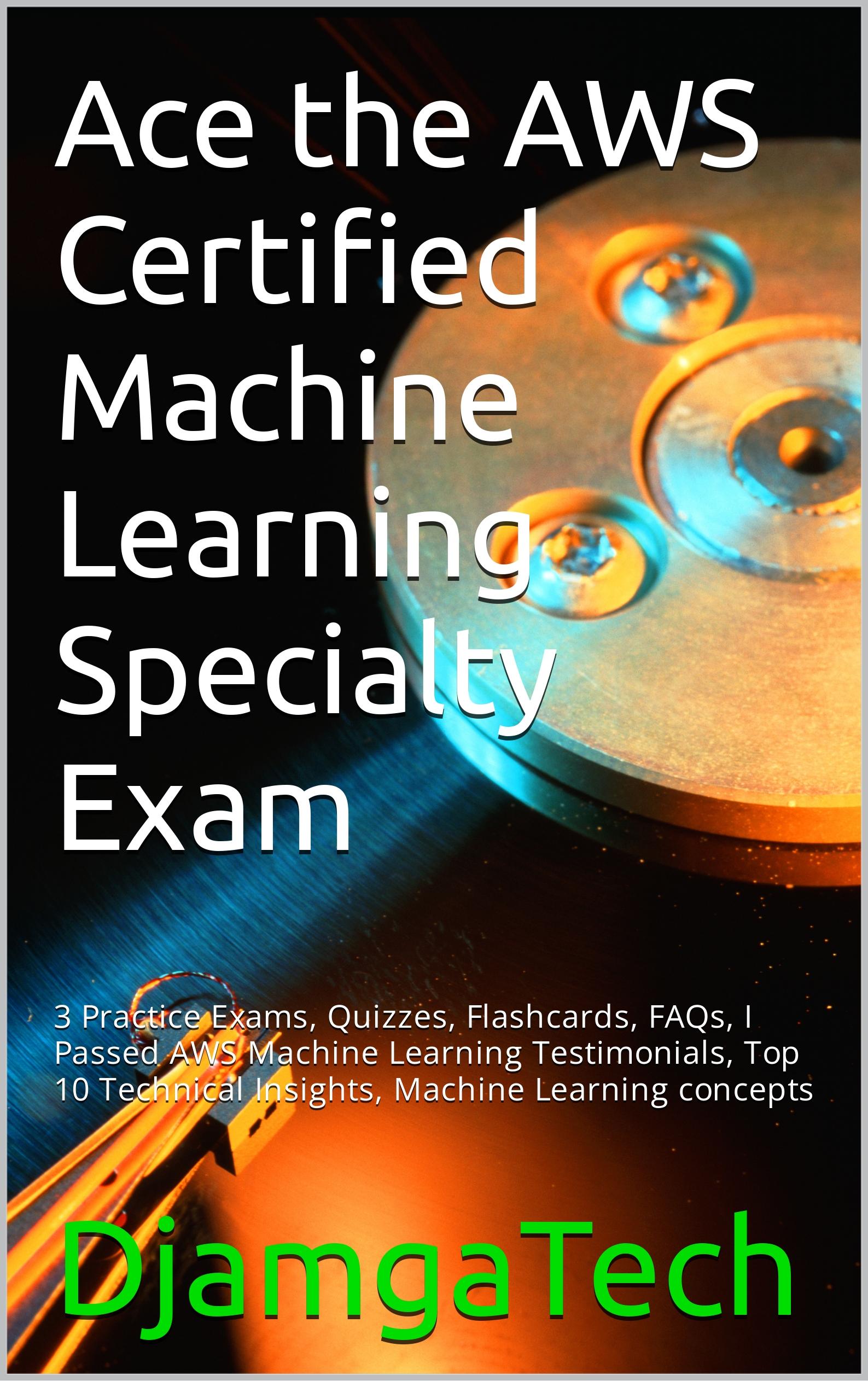

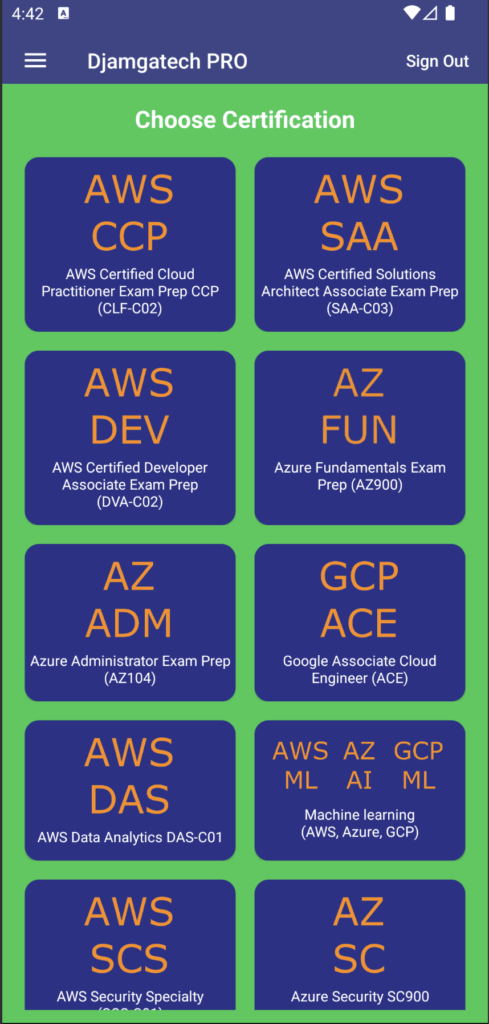



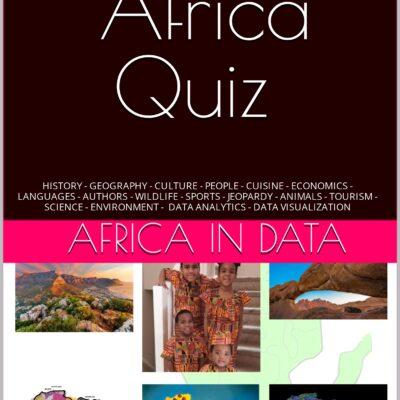

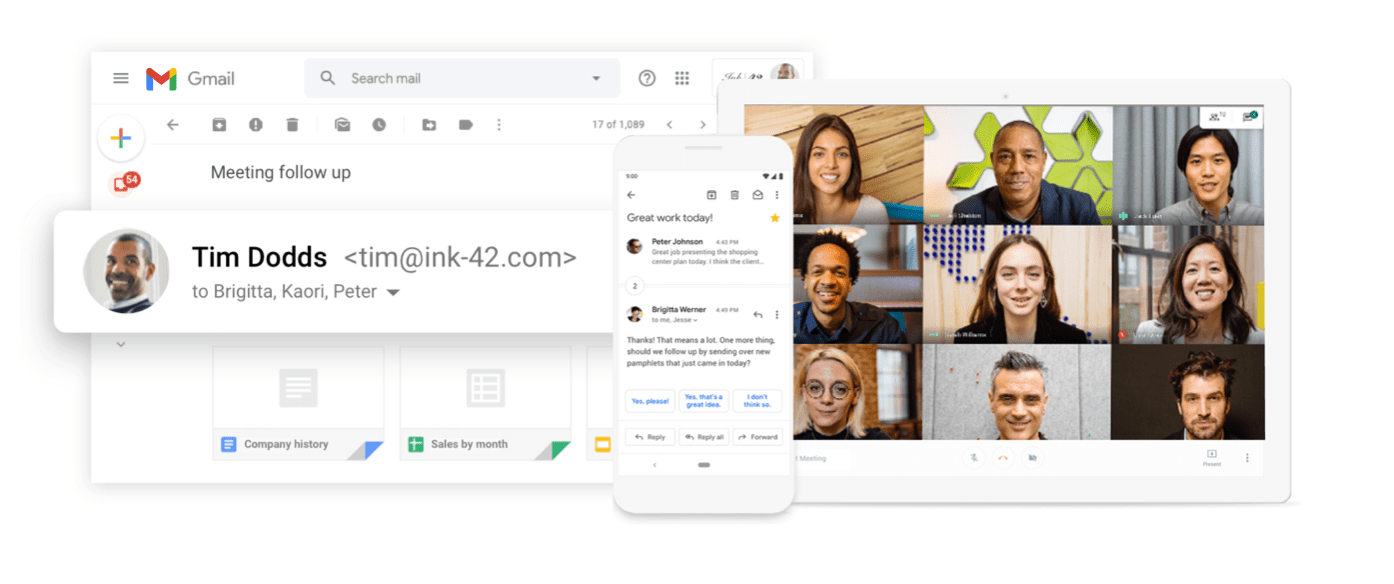 96DRHDRA9J7GTN6
96DRHDRA9J7GTN6